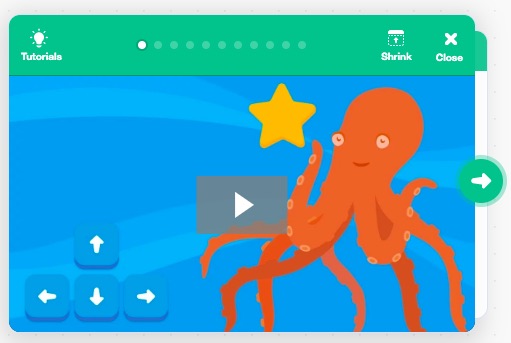In this introductory Scratch activity, students are guided through the Scratch 3.0 tutorial called, “Make a Chase Game.” This activity is designed for students who have little to no experience using Scratch.
As an extension, have 4th/5th grade students share their projects with 1st/2nd graders and receive feedback about how to improve the game, or make changes that would make the game more engaging for younger students.
CA K-12 Computer Science Standards
Standard Identifier: 3-5, A.P. 12
Create programs that include events, loops, and conditionals.
Control structures specify the order (sequence) in which instructions are executed within a program and can be combined to support the creation of more complex programs. Events allow portions of a program to run based on a specific action. Conditionals allow for the execution of a portion of code in a program when a certain condition is true. Loops allow for the repetition of a sequence of code multiple times.
Control structures specify the order (sequence) in which instructions are executed within a program and can be combined to support the creation of more complex programs. Events allow portions of a program to run based on a specific action. Conditionals allow for the execution of a portion of code in a program when a certain condition is true. Loops allow for the repetition of a sequence of code multiple times.
Standard Identifier: 3-5, A.P. 15
Use an iterative process to plan and develop a program by considering the perspectives and preferences of others. (P1.1, P5.1)
Planning is an important part of the iterative process of program development. Students gain a basic understanding of the importance and process of planning before beginning to write code for a program. They plan the development of a program by outlining key features, time and resource constraints, and user expectations. Students should document the plan as, for example, a storyboard, flowchart, pseudocode, or story map.
Alternatively, students could plan as a team to develop a program to display experimental data. They could implement the program in stages, generating basic displays first and then soliciting feedback from others on how easy it is to interpret (e.g., are labels clear and readable?, are lines thick enough?, are titles understandable?). Students could iteratively improve their display to make it more readable and to better support the communication of the finding of the experiment. (NGSS.3-5-ETS1-1, 3-5-ETS1-2, 3-5-ETS1-3)

